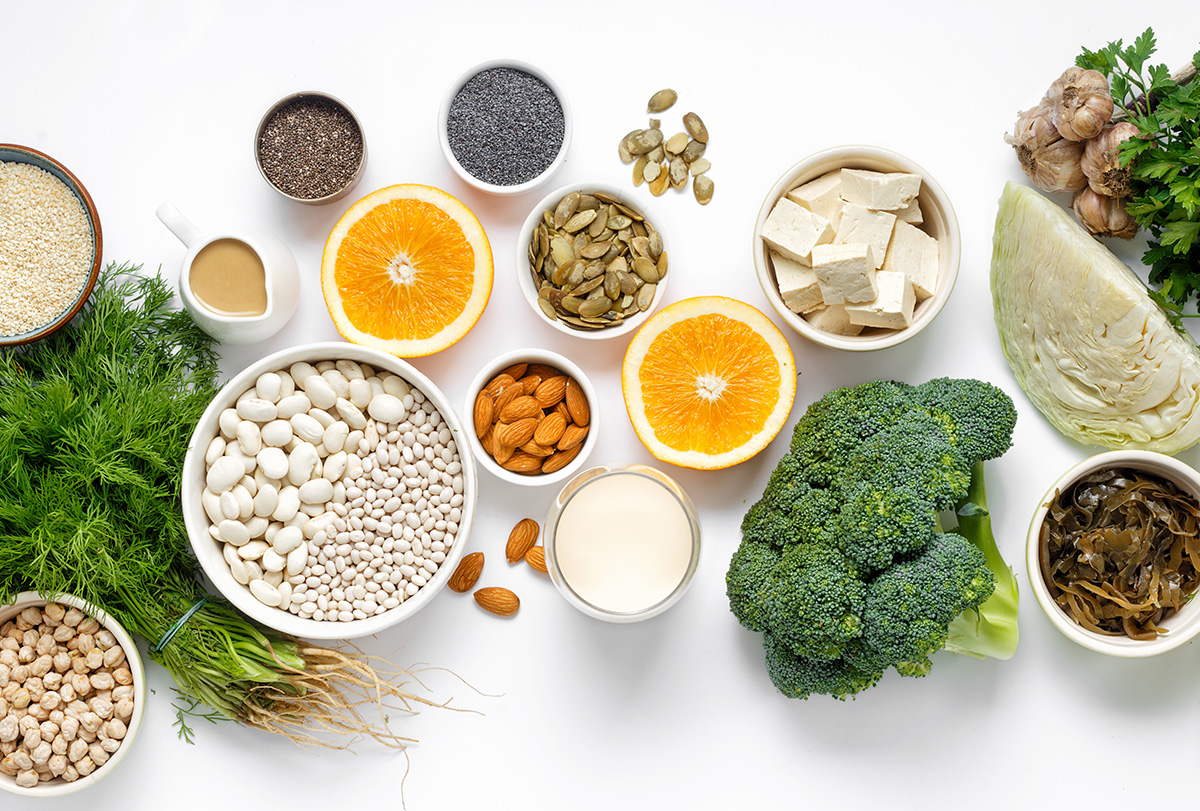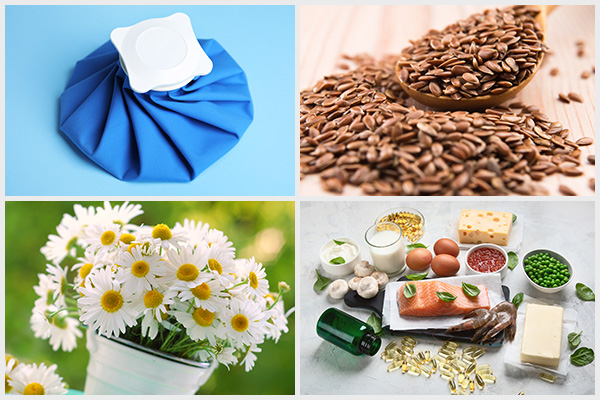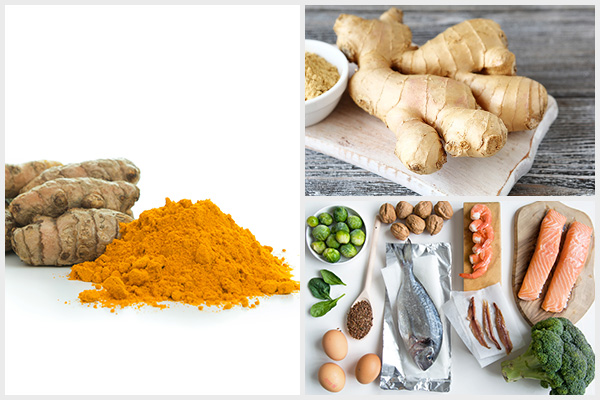In this article:
Bone spurs, or osteophytes, are smooth bony overgrowths that form over the spine or around the joints, especially those affected by osteoarthritis. (1) They stem from the normal bone and develop over a long time as one gets older.

The spurs are mostly painless, but they can exert stress on the surrounding tissue, nerves, muscles, and spinal cord and cause pain.
Bone spurs form when a joint or bone has been damaged by arthritis. However, they do not always cause problems and often do not cause symptoms.
You may experience some common symptoms such as decreased range of motion, swelling, fever, acute-onset joint pain in a sexually active young adult, skin breaks with cellulitis adjacent to the affected joint, and underlying bleeding disorder in serious conditions. (1)
Home Remedies for Bone Spurs
Here are some natural ways to relieve the discomfort caused by bone spurs.
1. Apply a cold compress
Topical cold therapy can help soothe the pain and swelling associated with bone spurs.
The cold temperature constricts the underlying blood vessels, limiting blood flow to the area and thus bringing down inflammation. Plus, it numbs the underlying nerve endings, reducing the sensation of pain.
This simple remedy provides quick relief, but it only lasts for a temporary period, which is why you need to use it again and again until the condition improves.
Topical use:
- Wrap 1–2 ice cubes in a thin clean towel to make an ice pack. You can also use a packet of frozen vegetables or a frozen water bottle as a cold compress.
- Gently press the ice pack over the bone spur for 5–10 minutes.
- Repeat this remedy as needed.
Note: Don’t put ice directly on the skin as it can cause tissue damage and even frostbite.
2. Use flaxseeds
The alpha-linolenic acid found in flaxseeds has strong anti-inflammatory effects that can reduce the pain and soreness in and around bone spurs. (2)
Using this ingredient as part of a warm compress will provide you added benefits. The application of gentle heat stimulates blood circulation in the area, relieving swelling and muscle stiffness around the bone spur.
Topical use:
- Warm up some flaxseed oil.
- Soak a clean cloth in the warm oil.
- Wrap the cloth around the affected area.
- Place a heating pad on top of the cloth to keep the area warm.
- Use this treatment once daily.
Oral intake:
Include flaxseeds in your regular diet.
3. Try chamomile
Chamomile is a therapeutic herb with potent anti-inflammatory and analgesic properties that can ease the discomfort caused by bone spurs. (3)
Topical use:
- Put a tablespoon of dried or fresh chamomile flowers in a cup of hot water.
- Put a lid on top and let it steep for 10 minutes.
- Strain the liquid and wait for it to cool down.
- Use this water to rinse the affected area. You can also soak a cotton ball in the liquid and dab it over the affected area.
Oral intake:
- Add 2 teaspoons of chamomile to a cup of hot water.
- Steep for 5 minutes and then strain the tea.
- You can pour some honey into it to sweeten the taste.
- Drink 2–3 cups of this herbal tea every day.

4. Ensure adequate calcium, magnesium, vitamin D, and boron intake
Your body needs calcium, magnesium, vitamin D, and boron to build and maintain strong bones. (4) Magnesium, vitamin D, and boron also play a crucial role in regulating the distribution of calcium within the body.
If your body does not get enough of these vital nutrients, calcium may get increasingly deposited on the ends of bones, resulting in the formation of bone spurs. Plus, such nutritional deficiencies will inadvertently weaken your bones and pave the way for degenerative arthritis.
So, it is important to consume the recommended amounts of these nutrients to prevent and reverse such conditions.
If you develop bone spurs, get yourself tested for such deficiencies and fix your intake accordingly. If you are unable to meet the recommended intake through foods alone, consult your doctor about starting you on a supplement.
5. Use Epsom salt
Epsom salt is composed of magnesium sulfate and exhibits significant anti-inflammatory properties.
When used on a bone spur, it gets swiftly absorbed into the skin and curbs the pain, swelling, and tenderness in the affected area. It helps loosen the underlying joint and muscles for greater comfort during movement.
Plus, the magnesium in it helps dissolve and disperse the excess calcium deposited on the bone to make the osteophyte disappear quickly. (5)
Topical use:
- Mix 2 cups of Epsom salt in a tub of warm water.
- Soak your body or just the affected region in this water for 20–30 minutes.
- Do this 4–5 times a week for best results.

6. Give borax powder a try
Borax powder is almost entirely made up of sodium borate or boron. It makes your body absorb and utilize calcium adequately so that excess amounts don’t get deposited on top of bones to cause osteophytes. (6)
Since boron is quite alkaline, it also helps neutralize the acid buildup inside the body and prevent bone spurs.
You can use this ingredient topically as well as internally to heal existing bone spurs and keep new ones from forming.
Oral intake:
- Fill a bottle with 1 liter of clean filtered water.
- Mix in 5–6 grams (approximately 1 teaspoon) of 100% pure borax and 5 grams of Himalayan pink rock salt.
- Put 5 milliliters of this solution in a glass of clean filtered water and drink it, once in the morning and then at night (10 milliliters daily).
Topical use:
- Fill a tub or bucket with 8 cups of warm water.
- Mix in 1 teaspoon of pure borax powder until it gets properly dissolved.
- Immerse your feet in this solution for 20–30 minutes.
- Do this daily or every alternate day for a few weeks.
7. Massage and stretching can help
Massaging the bone spur and the area around it can help reduce pain and swelling while improving flexibility.
The topical stimulation increases blood flow in the area and brings down inflammation. It also relaxes the tense muscles and joints surrounding the bone spur to allow free and painless movement.
Moreover, some studies have even demonstrated that massage can lower a certain neurotransmitter called substance P, which is associated with pain sensation. (7)
This simple and cost-free therapy can provide quick pain relief without the side effects associated with traditional medication.
Similarly, stretching the affected area can also loosen the muscles and tendons around the bone spur. This will help relieve the stress placed on the bony outgrowth.
8. Consume these anti-inflammatory supplements
You can try the following supplements to alleviate the pain and swelling triggered by bone spurs, but only after running them by your doctor:

- Turmeric: There is considerable research highlighting the anti-inflammatory activity of turmeric, which can be attributed to its main active compound called curcumin. (8) Curcumin figures as one of the most potent antioxidants in the world and can substantially reduce the discomfort caused by bone spurs. A good-quality turmeric supplement should contain about 95% curcuminoids.
- Omega-3 fatty acids: Eicosapentaenoic acid (EPA) and docosahexaenoic acid (DHA) are both omega-3 fatty acids that help curb inflammation and bone degeneration. (9) You can also try triple-power omega-3 fish oil, which also contains concentrated amounts of curcumin and astaxanthin along with the fatty acids to prove extra healing benefits and faster relief.
- Ginger: According to several studies, the anti-inflammatory effect of ginger is comparable to over-the-counter medications such as Ibuprofen, but it has none of the side effects associated with the latter. Thus, it offers a natural and safer alternative to chemical drugs. A good-quality ginger supplement should include 5%–6% gingerols and 6% shogaols.
Preventing Painful Bone Spurs
Certain lifestyle interventions can help prevent the formation of painful bone spurs, especially in the feet. Your feet carry the entire load of your body, which makes them increasingly susceptible to this condition.
Here are a few things you can do to reduce the risk:
- Maintain a healthy weight to reduce the strain on your joints and your feet.
- When buying shoes, make sure they aren’t too tight or loose but fit properly and comfortably around the feet. Moreover, they should ideally have a padded shock-absorbent sole, firm sides, and proper heel support.
- Choose appropriate footwear for different types of physical activities.
- Consume a healthy, well-balanced diet that is loaded with nutrients and antioxidants.
- Give up any exercise that repeatedly causes impact injuries.
- Keep stress under control.
- Get proper sleep on a regular basis.
Risk Factors Associated With Bone Spurs
The following factors can contribute to the formation of bone spurs:
- Advancing age
- Family history or genetic predisposition
- Injuries
- Inadequate nutrition
- Poor posture
When to See a Doctor
When you experience joint pain, stiffness, and numbness, you need to consult your healthcare provider.
To diagnose bone spurs, your healthcare provider may perform a physical examination and X-ray. CT scans or MRIs may also be performed to identify damaged ligaments or tendons.
Final Word
Bone spurs may cause mild to moderate pain and swelling, which can easily be managed at home with natural remedies. But you do need medical treatment if the condition becomes too painful or if the spur starts damaging the surrounding tissue.
You can even take OTC analgesics or NSAIDs to relieve the discomfort, but consult your doctor about the appropriate dosage and frequency of use.
- Was this article helpful?
- YES, THANKS!NOT REALLY


